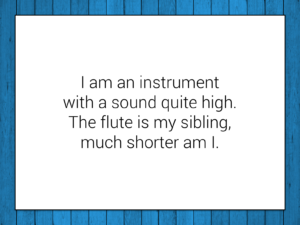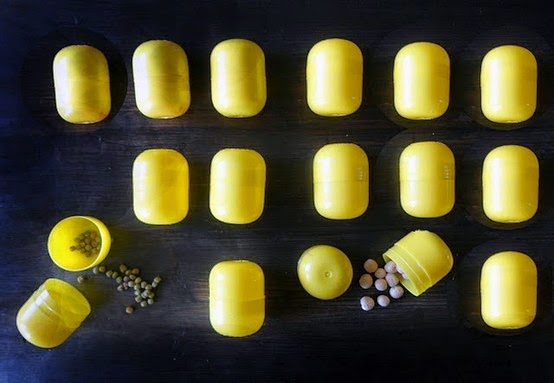As a musician, I’ve engaged friends, acquaintances, and even strangers in conversations involving musical preferences. On several occasions, these people were unable to express their thoughts about the music they loved because they lacked the musical vocabulary to do so. But they didn’t just lack the knowledge of specific terms; they were unable to find any words at all to express their thoughts.
It may be that they never received lessons on musical timbre or perhaps forgot much of the music vocabulary they learned as children. Either way, it’s important that we teach the concept of timbre to our own students, so that they are able to express their thoughts about the music they love best.
For me, the easiest place to start with timbre was always a simple “Name That Student” game. Children are familiar with the timbre of human voices. They can identify their mother, brother, or peer’s voice easily. So, it’s a great place to start when building timbre vocabulary.
Name That Student Game
Begin by explaining to the students that all instruments, including our own voices, have a “special sound” that is unique to them. Give them a brief example by asking them to close their eyes, as you play one of two familiar instruments. After they correctly identify the instruments, explain that they were able to name the instruments due to their “special sound”. This introduction will lay the foundation for the start of the game.
First, choose a word. It can be any word that all students know and can pronounce well. If the class is particularly restless, make it a ridiculous word that you know will guarantee some laughs. “Hippety-hoo” was always a favorite in my classes.
Next, ask three (or more) students to hide behind a partition in the classroom. If you’re allowed to have cardboard in your room, you might even consider creating a “singing cave” like this one from Alisha Gabriel, which I found on Pinterest:
Alisha (the creator of this singing cave) uses it to help students match pitch, but it would be great for timbre games as well. If you aren’t allowed to bring such items into your room due to air quality restrictions, simply ask the three students to come forward and have the rest of the class face the other direction.
Then, have each student speak the word you chose and ask the rest of the class to identify the student who spoke. Continue until the class has correctly identified all three students. Then, bring up a new group of students and continue playing the game.
I used to play this game with my first graders. They were always impressed with their ability to correctly and easily identify every student. After we were finished with the game, I explained that the “special sound” is called timbre. And from then on, instead of calling it the “special sound” each instrument makes, I called it timbre.
Instrument Riddles Game
Starting in second grade, I delved into instrument families and introduced more timbre vocabulary, such as bright, dark, mellow, and brassy. By the time students reached third grade, they were ready to apply their timbre vocabulary to my Instrument Riddles Game.

The instrument riddles game was a fun way for students to review the instruments they’d learned about in the previous year. I always made sure to bring several instruments in to play for the class. I felt it was important for them to see, hear, and touch the instruments. These type of real-life experiences are incredibly impactful.
Egg Shaker Game
For another fun game, fill some plastic eggs with different materials. Have students shake the eggs and try to guess what’s inside. I never had the chance to try this idea on one of my own classes, but I would’ve used it in a center or as a station for our Celebrate the Arts Night.
You could also extend the activity by asking students to write down their guesses along with the vocabulary terms (soft, bright, harsh, etc.) that defend their answers.
 |
| Photo via Ashley Gordon Education Blog |
Skip the Prep Work
The Basics of Timbre presentation guides students through the sights, sounds, and feel of timbre with real-life images, interactive audio, and video examples. The best part is, it doesn’t require tons of prep work. It’s designed to be simple, easy to use, and a resource that you’ll come back to year after year. Click the image below to learn more.

These ideas are just a starting point, but I hope some of them will find their way into your own toolkit for building music literacy. Leave a message in the comments with lessons you’ve used to teach timbre vocabulary. I’d love to hear more ideas from you!
Thanks for reading!
Jennifer

3 Responses
Love the idea for guessing the contents based on timbre! I may be using that as a center soon… 🙂
Thanks for sharing!
You're welcome 🙂